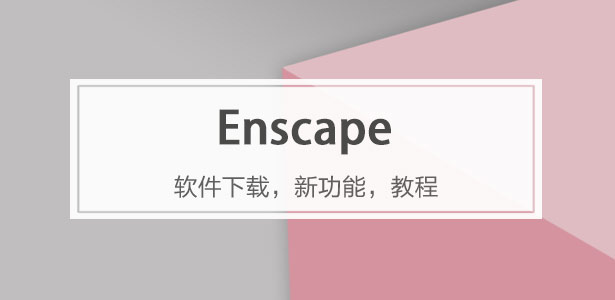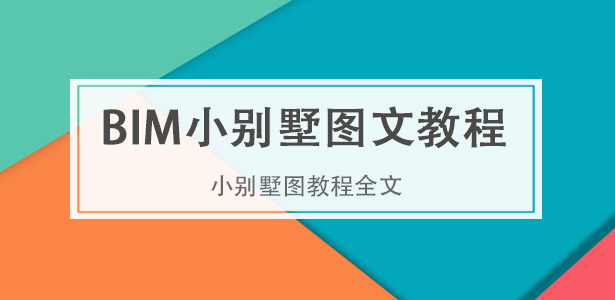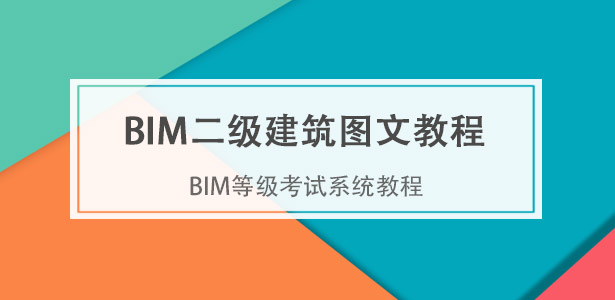* 主體類型
* 企業(yè)名稱
* 信用代碼
* 所在行業(yè)
* 企業(yè)規(guī)模
* 所在職位
* 姓名
* 所在行業(yè)
* 學(xué)歷
* 工作性質(zhì)
請(qǐng)先選擇行業(yè)
您還可以選擇以下福利:
行業(yè)福利,領(lǐng)完即止!

下載app免費(fèi)領(lǐng)取會(huì)員



△ 屹立在深圳灣超級(jí)總部基地的雙塔 ©張超建筑攝影工作室Twin Towers Anchoring the Shenzhen Bay Super Headquarters Base © ZC Architectural Photography Studio

△ 屹立在深圳灣超級(jí)總部基地的雙塔 ©廖沁芳 Twin Towers Anchoring the Shenzhen Bay Super Headquarters Base © LIAO Qinfang
深圳灣超級(jí)總部基地作為大灣區(qū)最重要的全球高端產(chǎn)業(yè)聚集地,超總將以綠色生態(tài)、科技互聯(lián)、人文藝術(shù)作為設(shè)計(jì)主旨,以街坊式規(guī)劃理念創(chuàng)造活力街道,打造高滲透率的復(fù)合型公共空間。
神州數(shù)碼國際創(chuàng)新中心作為超總首發(fā)項(xiàng)目之一,基地雄踞核心腹地,緊鄰中央綠軸,項(xiàng)目在尊重超總片區(qū)嚴(yán)整規(guī)劃秩序的基礎(chǔ)上,以靈動(dòng)滲透的空間策略和像素化的科技語匯實(shí)現(xiàn)創(chuàng)造性回應(yīng)。設(shè)計(jì)既尊重城市規(guī)劃框架,又以立體生態(tài)、多維鏈接等手法突破形態(tài)邊界,于嚴(yán)謹(jǐn)網(wǎng)格中書寫自由躍動(dòng)的建筑敘事。
Digital China International Innovation Center | Order and Freedom
Shenzhen Bay Super Headquarters Base, the Greater Bay Area’s premier hub for global high-end industries, is guided by principles of green ecology, technological connectivity, and cultural vitality. Through a block-based urban fabric, it creates lively streets and highly permeable mixed-use public spaces.
As one of the first flagship projects within the base, the Digital China International Innovation Center occupies a prime location at the core of the district, adjacent to the central green axis. Respecting the rigorous planning framework, the design responds creatively with spatial permeability and a pixelated technological language. While honoring the urban grid, the architecture transcends formal boundaries through vertical ecology and multi-dimensional linkages, composing a narrative of freedom and dynamism within disciplined order.

△ 項(xiàng)目在深圳灣超級(jí)總部基地的位置©深圳華匯設(shè)計(jì) the Project’s Location within the Shenzhen Bay Super Headquarters Base ©Shenzhen Huahui Design

△ 東側(cè)視角 ©張超建筑攝影工作室View from the East ©ZC Architectural Photography Studio

△ 西側(cè)視角 ©廖沁芳 View from the West © LIAO Qinfang
水平滲透,垂直蔓生
規(guī)劃以謙遜而敏銳的姿態(tài)融入深圳灣超級(jí)總部基地的整體構(gòu)架,從容回應(yīng)山海城市特有的空間韻律。設(shè)計(jì)以水平方向輕柔滲透,給城市留出呼吸的通道——街巷微縮成谷,廣場蔓延如泊,與中央綠軸和地鐵脈絡(luò)溫柔相接,在嚴(yán)謹(jǐn)?shù)木W(wǎng)格中孕育出自由流動(dòng)的底部界面。垂直系統(tǒng)則如有機(jī)生長的藤蔓,以連廊、露臺(tái)與空中院落構(gòu)建出一組立體聚落,在理性秩序基調(diào)上奏出一曲輕盈躍動(dòng)的自然樂章。這一切并非對(duì)城市結(jié)構(gòu)的簡單復(fù)現(xiàn),而是在理解其內(nèi)在邏輯后,以建筑語言實(shí)現(xiàn)紀(jì)律與靈動(dòng)之間的平衡——既錨固于城市秩序,又自由地向上生長。
Horizontal Porosity, Vertical Growth
The master plan integrates into the framework of the Shenzhen Bay Super Headquarters Base with a humble yet perceptive stance, attuned to the spatial rhythms of a city shaped by mountains and sea. Horizontally, the design introduces gentle permeability, carving passages that breathe with the city—streets narrowing into valleys, plazas unfolding like inlets—seamlessly connecting with the central green axis and transit networks. Within a rigorous grid, these gestures generate a fluid and open ground interface.
Vertically, the system unfolds like organic vines, weaving sky bridges, terraces, and elevated courtyards into a three-dimensional cluster. Together, they compose a light and dynamic urban symphony that overlays order with vitality. Rather than a direct replication of the city’s structure, the architecture translates its underlying logic into a language of balance—anchored in urban discipline, yet free to ascend with organic growth.

△ 概念—“秩序與自由” ©深圳華匯設(shè)計(jì) Concept — "Order and Freedom" ©Shenzhen Huahui Design

△ 面向綠軸的建筑界面 ©張超建筑攝影工作室 Architectural Frontage Facing the Central Green Axis ©ZC Architectural Photography Studio

△ 晨光中的建筑 ©廖沁芳Architecture in the Morning Light ©LIAO Qinfang

△ 晚霞里的建筑 ©張超建筑攝影工作室The Building in the Twilight ©ZC Architectural Photography Studio

△ 建筑融于城市綠意 ©張超建筑攝影工作室Architecture Immersed in Urban Greenery ©ZC Architectural Photography Studio
多維鏈接
設(shè)計(jì)以立體疊合的公共空間系統(tǒng),構(gòu)建從城市到建筑的多維連接體系。首層通過嵌入口袋公園與蜿蜒街巷,柔化地塊邊界,使綠意如溪流般漫入城市肌理,形成與中央綠軸及相鄰地塊的柔性滲透;二層以架空連廊編織出一張充滿溫度的步行網(wǎng)絡(luò),將人群、公園與光影溫柔串聯(lián),激發(fā)區(qū)域慢行活力。
綠意自地面庭院經(jīng)裙房綠化臺(tái)地延展至空中露臺(tái),逐步向上形成井然有序的生態(tài)系統(tǒng)。這一系統(tǒng)不僅強(qiáng)化了建筑與城市的交互界面,更是超越了連接本身,它將人、自然與建筑編織成有機(jī)的整體,巧妙的將本項(xiàng)目融入到深圳灣超級(jí)總部基地的大生態(tài)框架中。
Multi-Dimensional Connectivity
The design establishes a multi-layered system of public spaces that links the city to the building. At ground level, pocket parks and meandering streets soften the site’s edges, allowing greenery to flow into the urban fabric like a stream, creating a seamless connection with the central green axis and adjacent plots. On the second level, elevated skybridges weave a warm, pedestrian network, gently connecting people, parks, and light, while activating the area with slow-mobility vitality.
Greenery extends from the ground-level courtyards through podium terraces up to the sky gardens, gradually forming a structured vertical ecosystem. This system not only strengthens the interface between building and city, but transcends mere connectivity—it integrates people, nature, and architecture into an organic whole, elegantly embedding the project within the broader ecological framework of the Shenzhen Bay Super Headquarters Base.

△ 城市滲透 ©深圳華匯設(shè)計(jì)Urban Permeability ©Shenzhen Huahui Design

△ 東側(cè)入口廣場 ©張超建筑攝影工作室East Entrance Plaza ©ZC Architectural Photography Studio

△ 塔樓底部透視 ©廖沁芳Perspective View of Tower Base ©LIAO Qinfang

△ 口袋廣場 ©張超建筑攝影工作室 Pocket Plaza ©ZC Architectural Photography Studio

△ 商業(yè)院落 ©張超建筑攝影工作室Commercial Courtyard ©ZC Architectural Photography Studio

△ 立體院落 ©張超建筑攝影工作室Three-Dimensional Courtyard ©ZC Architectural Photography Studio

△ 塔樓與底部街巷 ©張超建筑攝影工作室Tower and ground-level streetscape ©ZC Architectural Photography Studio

△ 二層慢行系統(tǒng) ©深圳華匯設(shè)計(jì)Second-level pedestrian network ©Shenzhen Huahui Design
生態(tài)疊脈
設(shè)計(jì)將深圳灣超級(jí)總部基地的綠色廊道視為城市生命的自然延伸,以建筑為媒介,實(shí)現(xiàn)人與自然的深層對(duì)話。通過建筑與生態(tài)系統(tǒng)的深度融合實(shí)現(xiàn)與城市脈搏的同頻共振。雙塔以錯(cuò)動(dòng)布局主動(dòng)迎上中央綠軸,層疊的空中露臺(tái)與退臺(tái)形成向上延展的綠色界面,猶如綠脈自然攀升,將城市級(jí)生態(tài)序列引入建筑垂直維度。這一策略不僅延續(xù)了片區(qū)生態(tài)框架,更將場地有機(jī)融入城市可持續(xù)發(fā)展的大脈絡(luò)之中——建筑不再是孤立的客體,而是與城市共呼吸的生命體,以其立體疊合的生態(tài)架構(gòu),譜寫出一曲自然、建筑與人文共鳴的生態(tài)交響,實(shí)現(xiàn)從宏觀城市到微觀場所的生命協(xié)同。
Ecological Layering
The design treats the green corridors of the Shenzhen Bay Super Headquarters Base as a natural extension of the city’s lifeblood, using architecture as a medium to facilitate a profound dialogue between people and nature. By deeply integrating the building with the ecological system, the project resonates in sync with the city’s pulse.
The twin towers, arranged in a staggered layout, engage actively with the central green axis. Layered sky terraces and stepped setbacks form a vertically ascending green interface, like veins of nature climbing upward, bringing the city’s ecological sequence into the building’s vertical dimension. This strategy not only continues the district’s ecological framework but also organically embeds the site within the broader narrative of urban sustainability. The architecture becomes more than an isolated object; it breathes with the city. Through its three-dimensional ecological layering, the project orchestrates a symphony of nature, architecture, and culture, achieving a seamless collaboration from macro urban scale down to micro site experience.

△ 與周邊環(huán)境有機(jī)相融 ©張超建筑攝影工作室 Organic integration with the surrounding context ©ZC Architectural Photography Studio


△ 樹梢上的建筑 ©張超建筑攝影工作室Architecture Among the Tree Canopies ©ZC Architectural Photography Studio
像素構(gòu)形,材藝織章
像素不再是數(shù)字世界的專屬語言,當(dāng)離散單元被賦予引力、張力與生命力,建筑便成為凝固的量子詩篇。方案設(shè)計(jì)以 “像素” 這一數(shù)字時(shí)代的基本單元作為建筑形態(tài)生成的母題,借助參數(shù)化邏輯,將體塊解構(gòu)為模塊化的像素單元,實(shí)現(xiàn)標(biāo)準(zhǔn)化模塊在三維空間中的自由組合與有機(jī)演變,構(gòu)建出兼具高度秩序性與動(dòng)態(tài)張力的建筑系統(tǒng)。
Pixelated Form, Material Craftsmanship
Pixels are no longer exclusive to the digital world. When discrete units are endowed with gravity, tension, and vitality, architecture becomes a frozen quantum poem. The design takes the “pixel,” the fundamental unit of the digital age, as the generative motif for the building’s form. Through parametric logic, the mass is deconstructed into modular pixel units, allowing standardized components to combine freely in three-dimensional space and evolve organically. The result is an architectural system that balances rigorous order with dynamic tension.

△ 像素構(gòu)型 ©深圳華匯設(shè)計(jì) Pixelated Form ©Shenzhen Huahui Design

△ 建筑與城市背景 ©張超建筑攝影工作室 Architecture in Urban Context ©ZC Architectural Photography Studio

△ 建筑與城市背景 ©廖沁芳Architecture in Urban Context ©LIAO Qinfang

△ 建筑夜景 ©TS倘思照明 Architectural Nightscape ©Tungsten-Studio
建筑立面形象通過像素化形態(tài)與科技感材質(zhì)的運(yùn)用,呼應(yīng)了神州數(shù)碼云科技的企業(yè)特質(zhì),傳遞出活力、科技、未來與發(fā)展的積極寓意。
模序律動(dòng)
參數(shù)化生成的像素單元被轉(zhuǎn)化為立面的基本模數(shù)語言。通過標(biāo)準(zhǔn)化4.5米×4.5米的幕墻模塊,構(gòu)建出清晰的結(jié)構(gòu)秩序。這些單元在立面構(gòu)圖中有序排布、疊合與穿插,形成既整體統(tǒng)一又富有變化的韻律節(jié)奏,建筑立面形態(tài)于理性秩序中誕生詩意律動(dòng)。塔樓與裙房延續(xù)同一模數(shù)語言,卻又以差異化的像素密度和構(gòu)圖節(jié)奏回應(yīng)各自功能屬性——塔樓強(qiáng)調(diào)豎向挺拔與科技感,裙房則采用更親切的尺度與虛實(shí)對(duì)比。立面不再是靜止的表皮,而是承載著秩序與自由、理性與詩意雙重基因的動(dòng)態(tài)媒介。
The architectural facade, through the use of pixelated forms and high-tech materials, echoes the corporate identity of Digital China’s cloud technology, conveying a dynamic, futuristic, and developmental symbolism.
Modular Rhythms
Parametrically generated pixel units form the fundamental modular language of the façade. Using standardized 4.5 × 4.5 m curtain wall modules, a clear structural order is established. These units are systematically arranged, overlapped, and interwoven, producing a façade rhythm that is both cohesive and dynamic, where poetic movement emerges from rational order.
The towers and podium continue this modular language while responding to their respective functions through differentiated pixel density and compositional rhythm—the towers emphasizing verticality and technological expression, the podium adopting a more approachable scale and contrast of solid and void. The façade transcends its role as a static envelope, becoming a dynamic medium that embodies dualities of order and freedom, reason and poetry.

△ 律動(dòng)的空間像素 ©張超建筑攝影工作室 Rhythmic Spatial Pixels ©ZC Architectural Photography Studio

△ 像素肌理 ©TS倘思照明 Pixelated Texture ©Tungsten-Studio

△ 云臺(tái) ©張超建筑攝影工作室 Viewing Platform ©ZC Architectural Photography Studio

△ 單元式墻身節(jié)點(diǎn) ©深圳華匯設(shè)計(jì)Unitized Curtain Wall Junction Detail ©Shenzhen Huahui Design
“材藝”協(xié)同
材料不僅是功能的載體,更是情感與氛圍的塑造者。建筑氣質(zhì)通過材料的精心遴選與工藝控制得以升華。玻璃的透與鋁型材的實(shí)形成強(qiáng)烈的虛實(shí)對(duì)比,在日光推移下演繹出豐富的光影層次,強(qiáng)化像素單元的立體感與韻律變化。
裙房立面的敘事則更貼近人文溫度。冰裂紋釉面陶板釉面下冰晶般交織的肌理,在不同光線與視角中呈現(xiàn)細(xì)微變幻,既與塔樓的科技感呼應(yīng),又為建筑基座注入一抹溫潤底蘊(yùn)。米黃色鋁格柵以柔和的線性肌理與之搭配,進(jìn)一步柔化體量、營造更具親和力的近人尺度環(huán)境。陶板的實(shí)與格柵的虛形成二次對(duì)話,進(jìn)一步豐富了立面層次。
Material-Art Synergy
Materials here are more than functional carriers—they shape emotion and ambiance. The building’s character is elevated through meticulous material selection and precise craftsmanship. The transparency of glass contrasts with the solidity of aluminum profiles, producing a dynamic play of light and shadow that accentuates the volumetric depth and rhythmic variation of the pixel units.
The podium façade conveys a more humanistic narrative. The crackle-glazed ceramic panels reveal ice-crystal-like textures beneath their surface, subtly shifting with changing light and viewpoints. This resonates with the technological expression of the towers while adding warmth and tactility to the building’s base. Complementing this, the pale yellow aluminum grilles provide soft linear textures, further humanizing the scale and enhancing approachability. The dialogue between solid ceramic and voided aluminum enriches the façade’s layered complexity.


△ 建筑構(gòu)造 ©深圳華匯設(shè)計(jì)Building Assembly ©Shenzhen Huahui Design

△ 建筑細(xì)部 ©張超建筑攝影工作室Architectural Details ©ZC Architectural Photography Studio

△ 釉面陶板©深圳華匯設(shè)計(jì) Glazed Ceramic Panel ©Shenzhen Huahui Design

△ 建筑與天空形成的圖底 ©張超建筑攝影工作室Architectural Silhouette against the Sky ©ZC Architectural Photography Studio

△ 霞光中的建筑 ©張超建筑攝影工作室 Architecture in the Afterglow ©ZC Architectural Photography Studio

△ 街區(qū)空間 ©張超建筑攝影工作室Block-scale Public Space ©ZC Architectural Photography Studio

△ 辦公空間 ©張超建筑攝影工作室Workspace ©ZC Architectural Photography Studio

△ 辦公空間 ©廖沁芳 Workspace ©LIAO Qinfang


△ 大堂空間 ©張超建筑攝影工作室Lobby Space ©ZC Architectural Photography Studio

△ 建筑與周邊環(huán)境關(guān)系 ©張超建筑攝影工作室The Relationship Between the Building and Its Surroundings ©ZC Architectural Photography Studio
結(jié)語
神州數(shù)碼國際創(chuàng)新中心,以像素為筆,以科技為墨,在深圳灣畔書寫著山海連城的城市新篇章。在城市尺度上,它不僅是一座地標(biāo)性建筑,更是城市發(fā)展的催化劑。其開放的城市公共空間體系,激活了周邊區(qū)域的城市活力;獨(dú)特的建筑形態(tài)與山海連城的地域特色相融合,豐富了深圳灣的城市天際線。
The Digital China Group International Innovation Center writes a new chapter of urban development along the Shenzhen Bay, using pixels as its brush and technology as its ink. On an urban scale, it is not only a landmark building but also a catalyst for the city's growth. Its open urban public space system has energized the surrounding area, fostering urban vitality. The unique architectural form, blending seamlessly with the regional characteristics of the mountains and sea, enriches the Shenzhen Bay skyline.

△ 融于灣區(qū)的城市天際線 ©夏智航 Integrated into the Bay Area City Skyline ©XIA Zhihang
設(shè)計(jì)圖紙 Drawings

△ 首層平面圖 ©深圳華匯設(shè)計(jì)Ground Floor Plan ©Shenzhen Huahui Design

△ -1F平面圖 ©深圳華匯設(shè)計(jì)Basement Floor Plan ©Shenzhen Huahui Design

△ 2F平面圖 ©深圳華匯設(shè)計(jì)Second Floor Plan ©Shenzhen Huahui Design

△ 3F平面圖 ©深圳華匯設(shè)計(jì) Third Floor Plan © Shenzhen Huahui Design

△ 4F平面圖 ©深圳華匯設(shè)計(jì) Fourth Floor Plan ©Shenzhen Huahui Design
項(xiàng)目信息
項(xiàng)目名稱:神州數(shù)碼國際創(chuàng)新中心
建筑設(shè)計(jì):深圳華匯設(shè)計(jì)
主創(chuàng)建筑師:肖誠,任園園
設(shè)計(jì)團(tuán)隊(duì):陳康元,高云飛,謝長金,曾小濤,高昊,李江濤
項(xiàng)目地點(diǎn): 廣東省深圳市
設(shè)計(jì)時(shí)間: 2018年1月至2023年5月
竣工時(shí)間: 2023年9月
用地面積: 25634㎡
建筑面積: 200000㎡
業(yè)主單位: 神州數(shù)碼集團(tuán)股份有限公司
代建單位:深圳卓越商業(yè)置業(yè)公司
室內(nèi)設(shè)計(jì): CTG Architecture
景觀設(shè)計(jì): Lab D+H SH
施工圖設(shè)計(jì):廣東省建筑設(shè)計(jì)研究院集團(tuán)股份有限公司
施工單位:中國建筑第三工程局有限公司
燈光顧問:TS倘思照明
攝影:張超建筑攝影工作室、廖沁芳、TS倘思照明、夏智航、深圳華匯設(shè)計(jì)
Project Information
Project Name: Digital China International Innovation Center
Architectural Design: Shenzhen Huahui Design
Chief Architects: Xiao Cheng, Ren Yuanyuan
Design Team: Chen Kangyuan, Gao Yunfei, Xie Changjin, Zeng Xiaotao, Gao Hao, Li Jiangtao
Location: Shenzhen, Guangdong Province, China
Design Period: January 2018 – May 2023
Completion: September 2023
Site Area: 25,634 ㎡
Gross Floor Area: 200,000 ㎡
Client: Digital China Group Co., Ltd.
Project Management Unit: Excellence Commercial Property Co., Ltd., Shenzhen
Interior Design: CTG Architecture
Landscape Design: Lab D+H SH
Construction Documents: Guangdong Architectural Design and Research Institute Group Co., Ltd.
Contractor: China State Construction Third Engineering Bureau Co., Ltd.
Lighting Consultant: Tungsten-Studio
Photography: Zhang Chao Architectural Photography Studio, Liao Qinfang, Tungsten-Studio,XIA Zhihang, Shenzhen Huahui Design
來源:本文由深圳華匯設(shè)計(jì)提供稿件,所有著作權(quán)歸屬深圳華匯設(shè)計(jì)所有。
本文版權(quán)歸腿腿教學(xué)網(wǎng)及原創(chuàng)作者所有,未經(jīng)授權(quán),謝絕轉(zhuǎn)載。

上一篇:時(shí)空竹橋,安岳臥佛院蓮花市集 / 四川象罔建筑設(shè)計(jì)有限公司
猜你喜歡

BIM建筑|紹興天地:芯片廠變身城市商業(yè)客廳 / Kokaistudios + AICO

BIM建筑|日本設(shè)計(jì)新作:廣州國際航運(yùn)大廈,琶洲觀景的不同方式

BIM建筑|北京建院新作:周口店中心小學(xué)應(yīng)急救災(zāi)校舍

建筑賞析|繪畫與建筑:空間視角下の日本藝術(shù)

BIM建筑|深圳灣超級(jí)總部基地20圖:從渲染到實(shí)景

建筑賞析|紐約庭院的“拱形魔法墻”——串聯(lián)功能,調(diào)和自然與城市
最新課程

施工BIM定制化培訓(xùn)
Revit
50410人已學(xué)

BIM土建實(shí)戰(zhàn)訓(xùn)練 - A部分標(biāo)準(zhǔn)化建模指導(dǎo)
Revit
7385人已學(xué)

BIM土建實(shí)戰(zhàn)訓(xùn)練 - B部分 場地與基礎(chǔ)模型創(chuàng)建
Revit
10585人已學(xué)

BIM土建實(shí)戰(zhàn)訓(xùn)練 - C部分 地下室土建模型創(chuàng)建
Revit
16150人已學(xué)

BIM土建實(shí)戰(zhàn)訓(xùn)練 - D部分 協(xié)同工作
Revit
3328人已學(xué)

BIM土建實(shí)戰(zhàn)訓(xùn)練 - E部分 裙房及塔樓模型創(chuàng)建
Revit
6156人已學(xué)
推薦專題
- 生與死的悲喜劇:深度剖析羅西圣卡塔多公墓
- 中標(biāo)方案|深圳河套合作區(qū)N-04項(xiàng)目 / 局內(nèi)INGAME、L+CC、筑博
- 上海小區(qū)藏9米“白紗瀑布”!會(huì)透光的樓梯庭院,連欄桿都在寵居民
- 北京建院新作:天漢大劇院文化中心
- 樹下:武漢麓客島一號(hào)驛站 / ZAD鷙飛建筑設(shè)計(jì)事務(wù)所
- 井JING×胡同美術(shù)館 / 朱小地工作室
- MVRDV在建方案:德國人工智能創(chuàng)新園
- 旅行現(xiàn)場 | 從里約熱內(nèi)盧到巴西利亞:巴西建筑的熱帶屬性與現(xiàn)代性(上)
- OMA研究方案:釜山山坡住區(qū),可適應(yīng)性的發(fā)展原型
- 武漢麓客島動(dòng)物農(nóng)場?/ 萬社設(shè)計(jì)



































